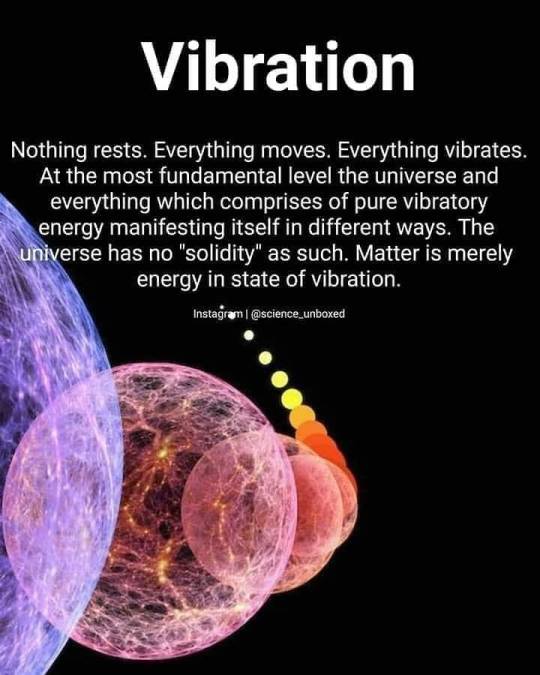#sciencelook
Explore tagged Tumblr posts
Photo

VIBRATIONAL UNIVERSE #sciencelook . . . . . . . . #vibrationuniverse, #vibrationalfrequency, #particlesmoving, #nothingrest, #Everythingmoving, #everythingvibrates, #FridayVibes, #Goodmorning, #particlematter, #vibrationiseverything, #vibrates, #instascience, #scienceworld, #astroscience,. https://www.instagram.com/p/CEaqAIuMu2u/?igshid=1q4tfo5j5osz1
#sciencelook#vibrationuniverse#vibrationalfrequency#particlesmoving#nothingrest#everythingmoving#everythingvibrates#fridayvibes#goodmorning#particlematter#vibrationiseverything#vibrates#instascience#scienceworld#astroscience
0 notes
Photo

Earth Vs Pluto💞❤️ . . . . . . . . #earthvspluto, #plutocracy, #plutodwarfplanet, #dwarfplanet, #dwarfplanets, #sciencelook, #universe, #plutodiameter, #solarsystems, #comparison, #Lovepluto, #planets, #plutovsearth, (at Chennai, India) https://www.instagram.com/p/CEW3iRZsJWO/?igshid=10dkqc14xo2p9
#earthvspluto#plutocracy#plutodwarfplanet#dwarfplanet#dwarfplanets#sciencelook#universe#plutodiameter#solarsystems#comparison#lovepluto#planets#plutovsearth
0 notes
Photo

TRILLIONS OF GALAXIES IN OUR UNIVERSE | HUBBLE TELESCOPE | SCIENCE LOOK A new study using the Hubble Space Telescope and other telescopes has increased the estimate of galaxies in the Universe ten fold. It was previously estimated that there was 100 billion galaxies in the observable Universe. #100billiongalaxies, #trilliongalaxies, #universe, #hubblespacetelescope, #hubble, #milkyway, #galaxies, #oneuniverse, #sciencelook, (at Tamil Nadu) https://www.instagram.com/p/CET5O3YMmqE/?igshid=h1fge877tgsm
#100billiongalaxies#trilliongalaxies#universe#hubblespacetelescope#hubble#milkyway#galaxies#oneuniverse#sciencelook
0 notes
Photo

Time - Albert Einstein #albertsstuff, #timeisrelative, #timeisart #timesnow #alberteinsteinquote, #alberteinsteinquotes, #timetravelermemes, #quantumtime, #timeisgold, #scienceworld #sciencelooksgood, #sciencelook, #alberteinsteinscientist, (at Chennai, India) https://www.instagram.com/p/CERqTacMEIi/?igshid=1eieqjnpv568n
#albertsstuff#timeisrelative#timeisart#timesnow#alberteinsteinquote#alberteinsteinquotes#timetravelermemes#quantumtime#timeisgold#scienceworld#sciencelooksgood#sciencelook#alberteinsteinscientist
0 notes
Photo

No Time for Photons... #photon #photons #lightphoton, #lightphoton, #lightflares, #lightflare, #scienceworld, #sciencelook, #DonotexperienceTime, #sciencefacts, #photonparticle, #photonparticles, #photonsparticle, (at Tamil Nadu) https://www.instagram.com/p/CEPPGUqMu1D/?igshid=n0ln9i9l49l8
#photon#photons#lightphoton#lightflares#lightflare#scienceworld#sciencelook#donotexperiencetime#sciencefacts#photonparticle#photonparticles#photonsparticle
0 notes
Photo

Supernova #supernova #space #marissameyer #renegades #archenemies #novaartino #onepiece #astronomy #nasa #renegadestrilogy #adrianeverhart #universe #nebula #gamisdaily #dannabell #gamispolos #gamissupernova #love #oscarsilva #rubytucker #cosmos #gamis #blackhole #nightmare #gamiskatun #science #hijab #galaxy #novamclain #sciencelook https://www.instagram.com/p/CErtYSssgeK/?igshid=sm4b7tztpwl5
#supernova#space#marissameyer#renegades#archenemies#novaartino#onepiece#astronomy#nasa#renegadestrilogy#adrianeverhart#universe#nebula#gamisdaily#dannabell#gamispolos#gamissupernova#love#oscarsilva#rubytucker#cosmos#gamis#blackhole#nightmare#gamiskatun#science#hijab#galaxy#novamclain#sciencelook
0 notes